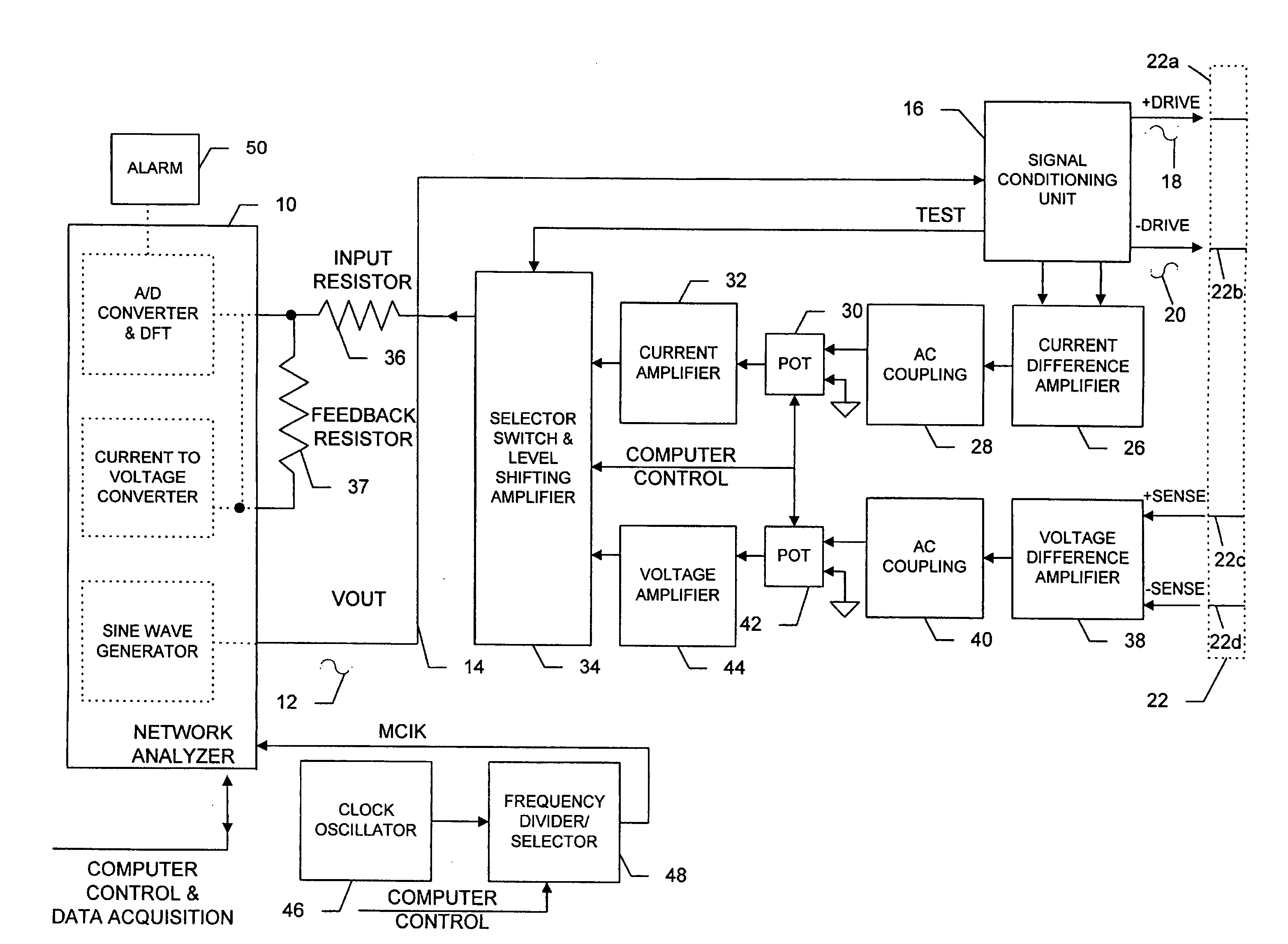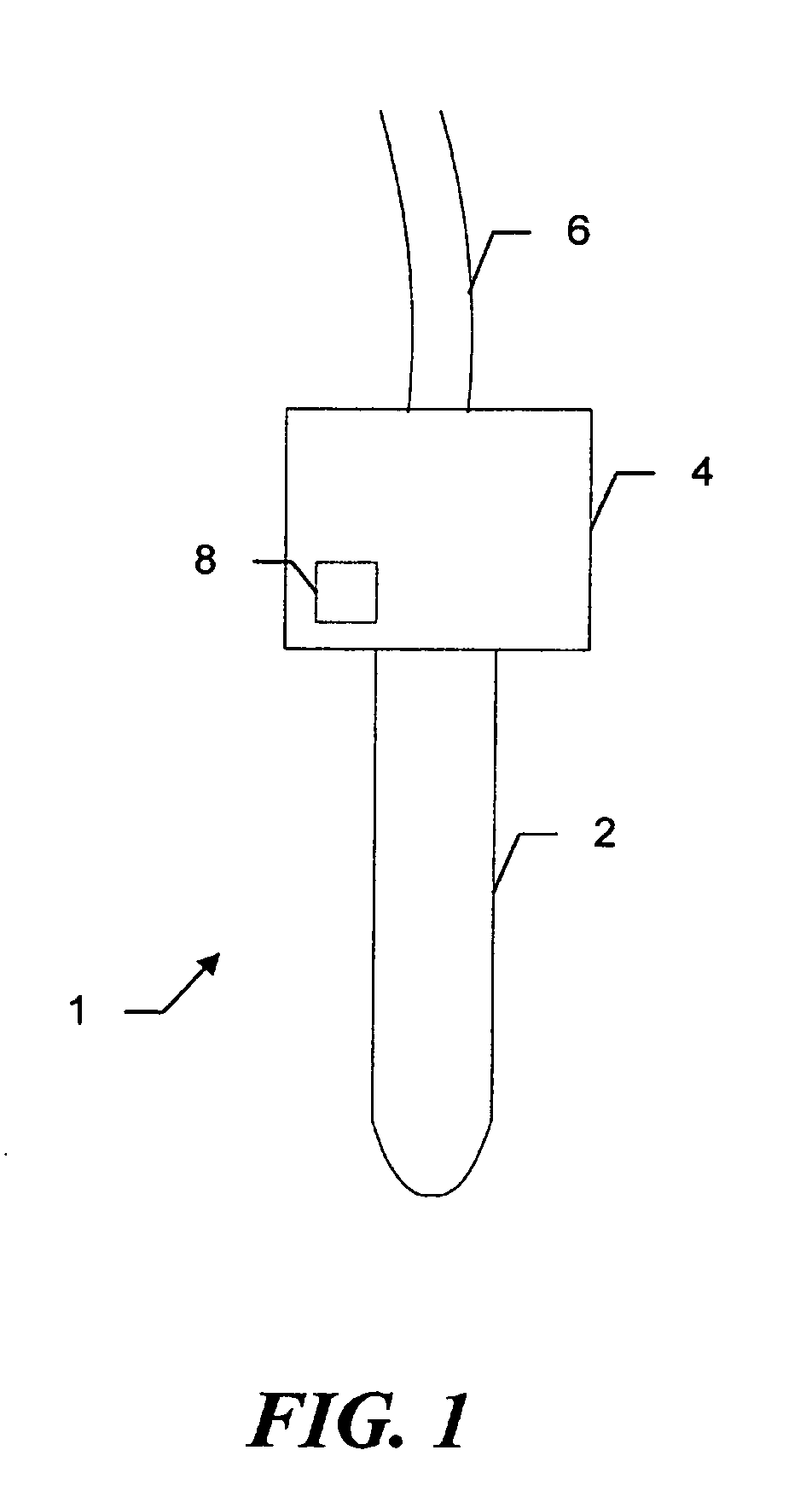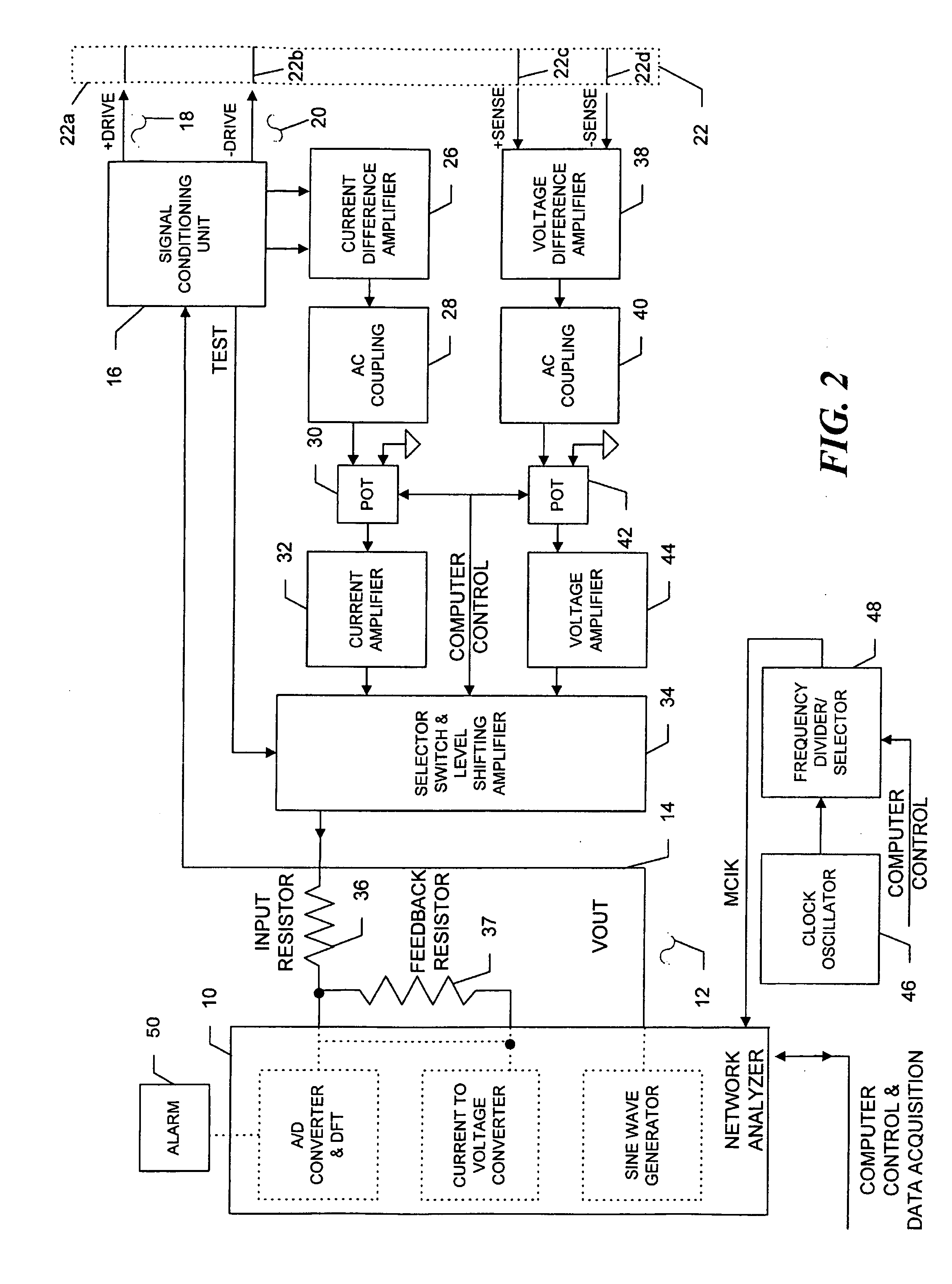Self-diagnostic sensor system
a sensor system and self-diagnostic technology, applied in the field of electrochemical sensor systems, can solve the problems of complex determination of bulb resistance, degrading the response time to sodium changes, and increasing bulb resistance with time, so as to eliminate cabling limitations and widen the linear measurement range
- Summary
- Abstract
- Description
- Claims
- Application Information
AI Technical Summary
Benefits of technology
Problems solved by technology
Method used
Image
Examples
Embodiment Construction
[0017]In FIG. 1, an electrochemical cell 1 such as an ion-specific electrode (ISE), a conductance cell, or the like has a body 2 for immersion in a solution, one or more of whose characteristics is being measured, and a cap 4 to which a cable 6 is connected. The cable provides power and measuring signals to the cell and receives signals from it. A chip 8 in cap 6 contains sensor circuitry in accordance with the one aspect of the present invention for monitoring the viability of the cell and for additionally providing an alarm when that viability is impaired. As noted above, the Analog Devices Model AD5934 Impedance Converter / Network Analyzer is a particularly suitable device for this purpose, since it contains, inter alia, a sine wave generator for generating the necessary drive signals, as well as circuitry for mathematically operating on the signals received from the cell in response to the drive signals to thereby generate digital outputs providing the magnitude and phase of the ...
PUM
| Property | Measurement | Unit |
|---|---|---|
| frequency | aaaaa | aaaaa |
| frequency | aaaaa | aaaaa |
| voltage | aaaaa | aaaaa |
Abstract
Description
Claims
Application Information
 Login to View More
Login to View More - R&D
- Intellectual Property
- Life Sciences
- Materials
- Tech Scout
- Unparalleled Data Quality
- Higher Quality Content
- 60% Fewer Hallucinations
Browse by: Latest US Patents, China's latest patents, Technical Efficacy Thesaurus, Application Domain, Technology Topic, Popular Technical Reports.
© 2025 PatSnap. All rights reserved.Legal|Privacy policy|Modern Slavery Act Transparency Statement|Sitemap|About US| Contact US: help@patsnap.com



